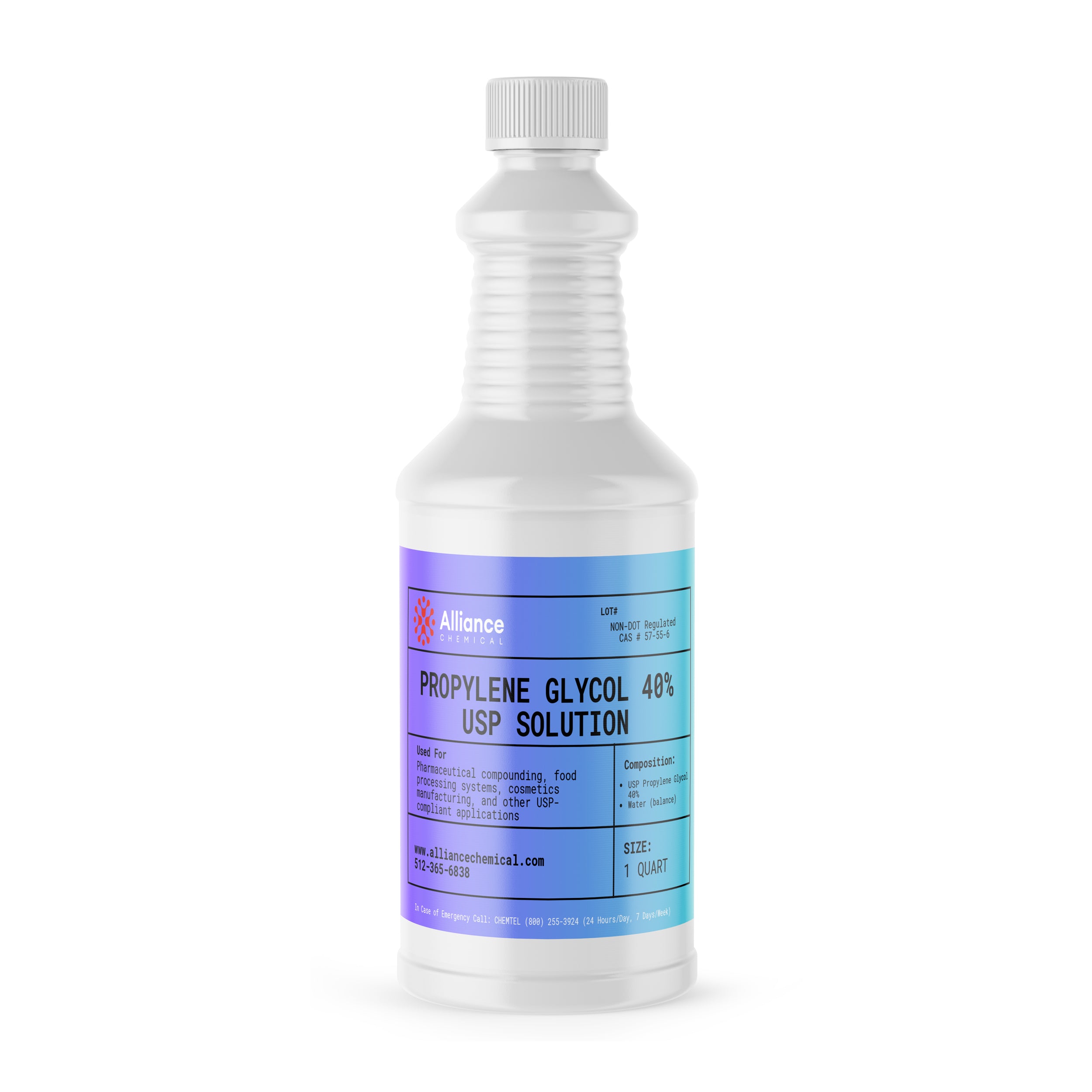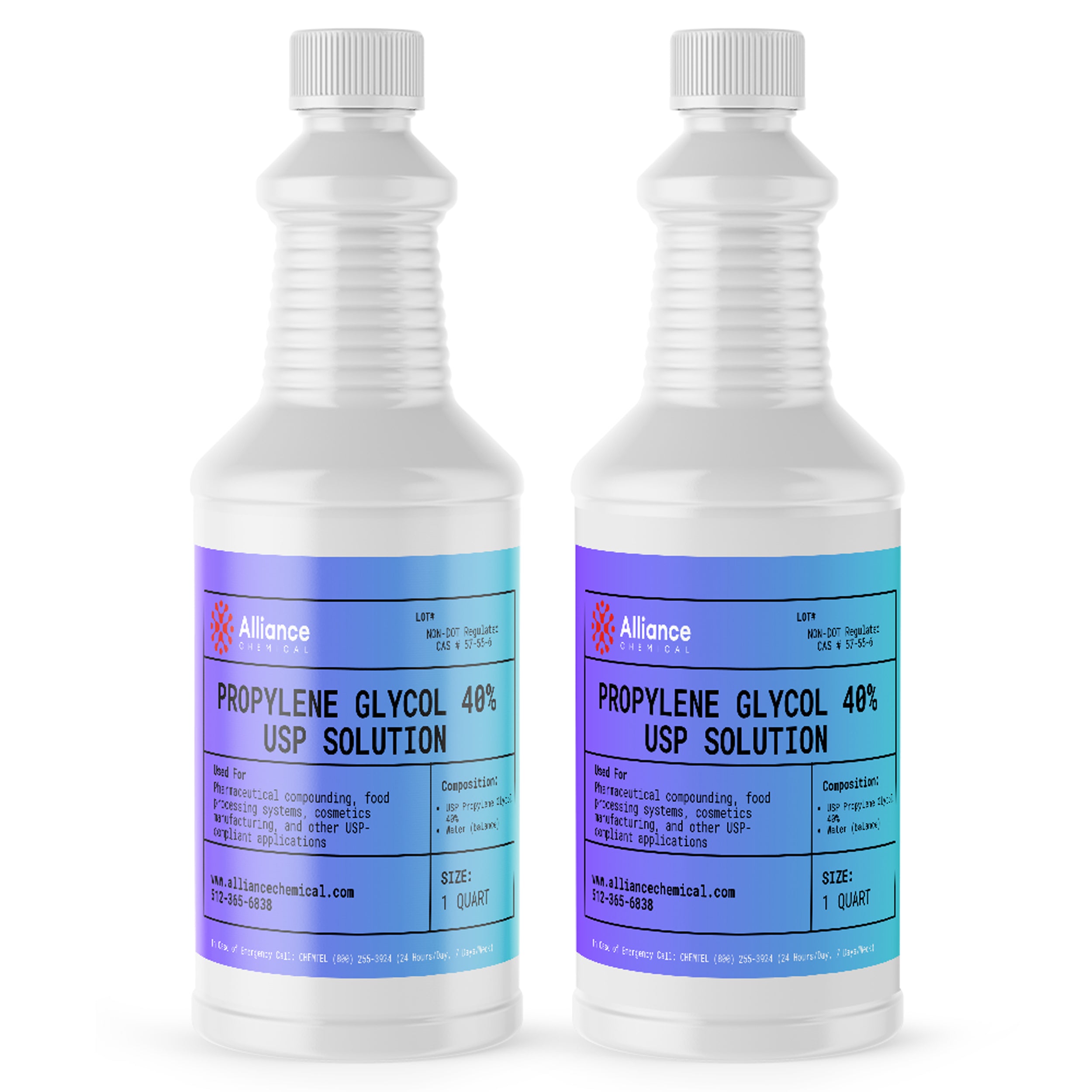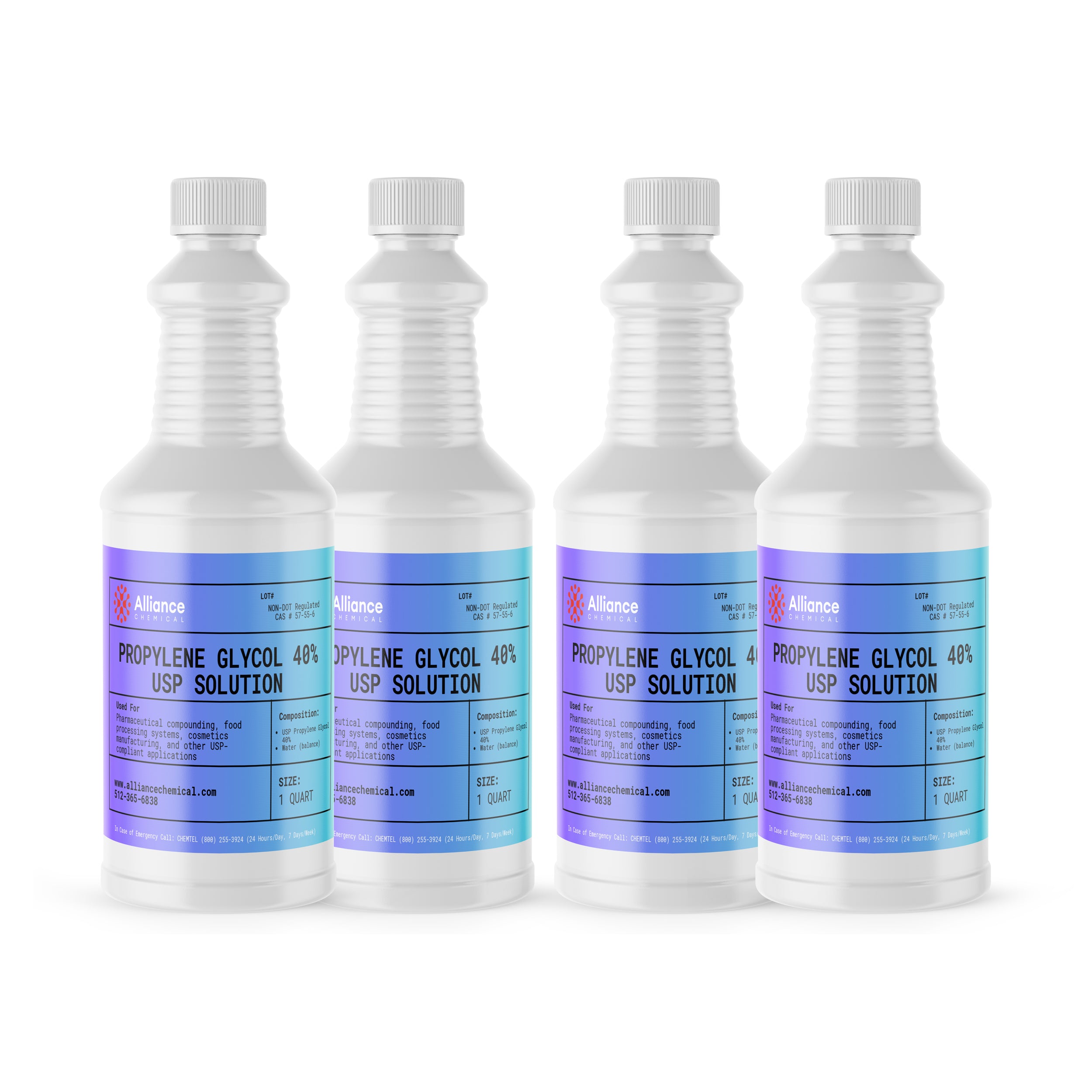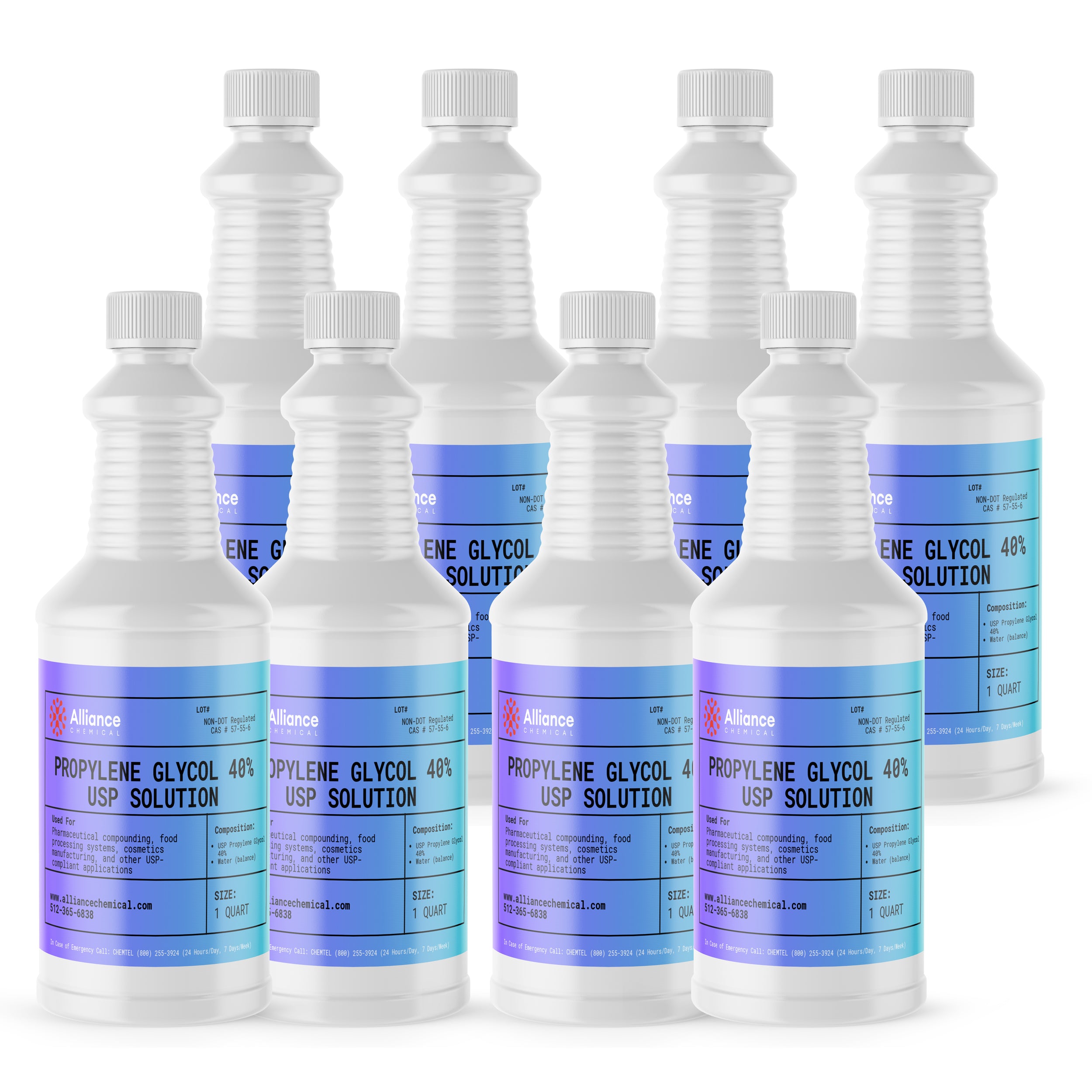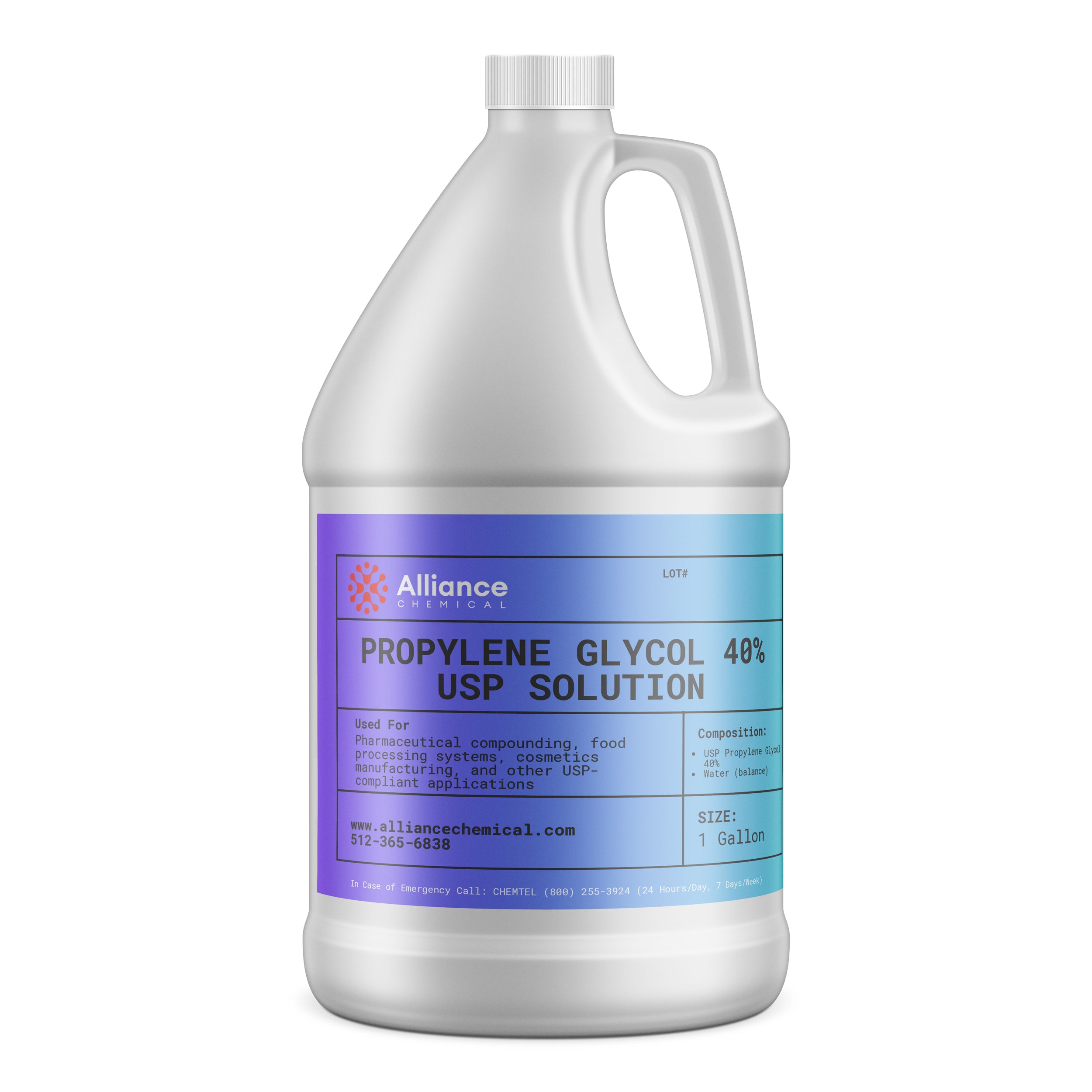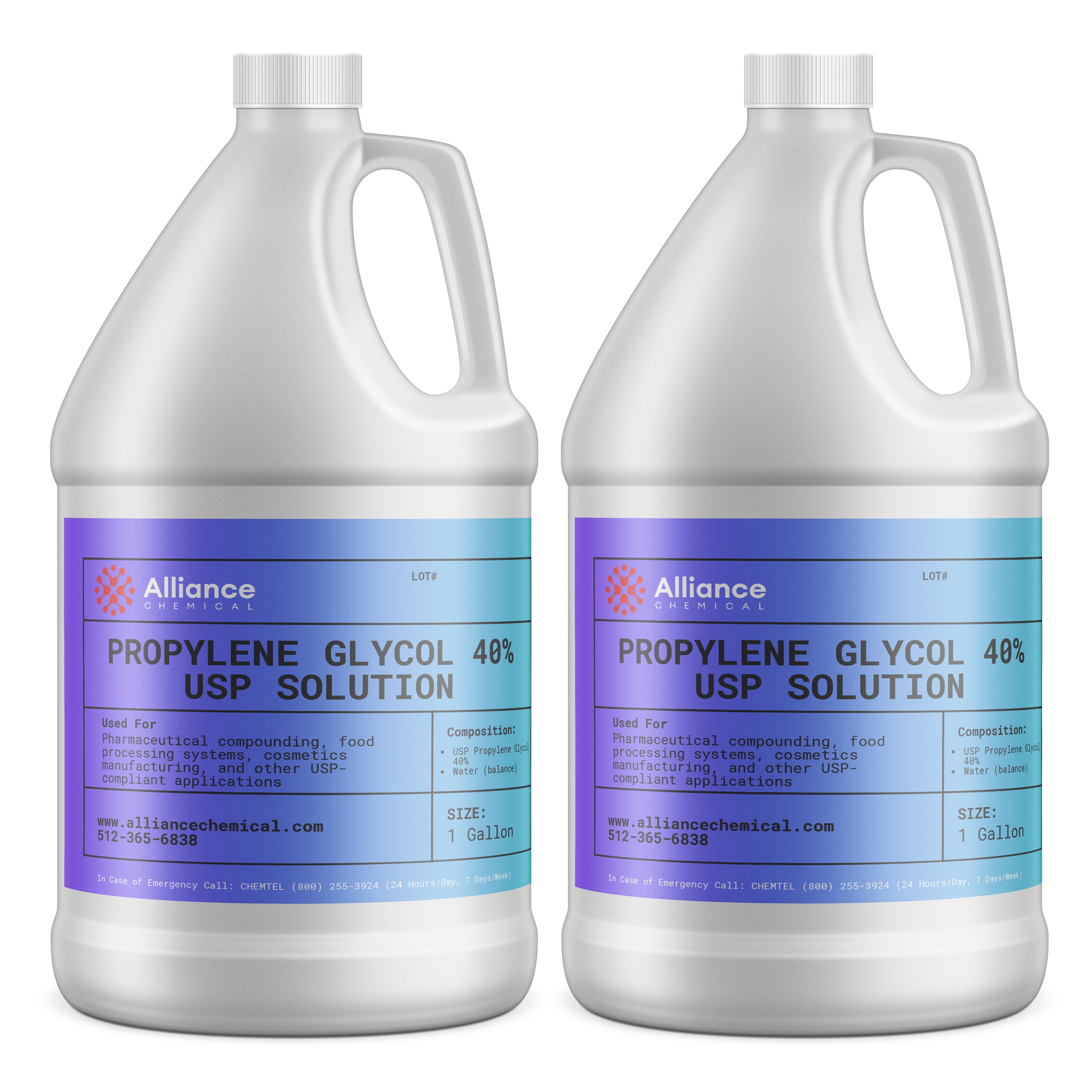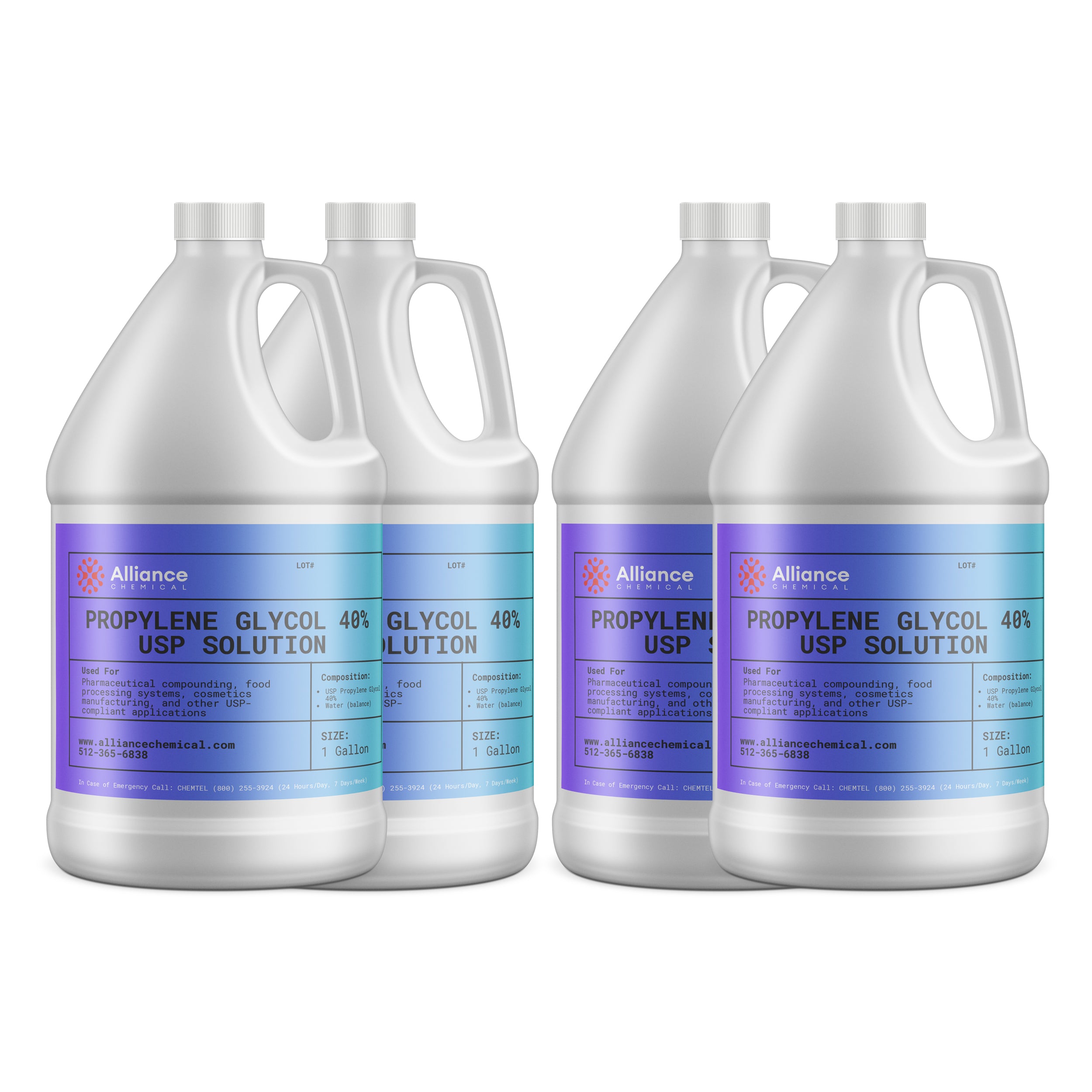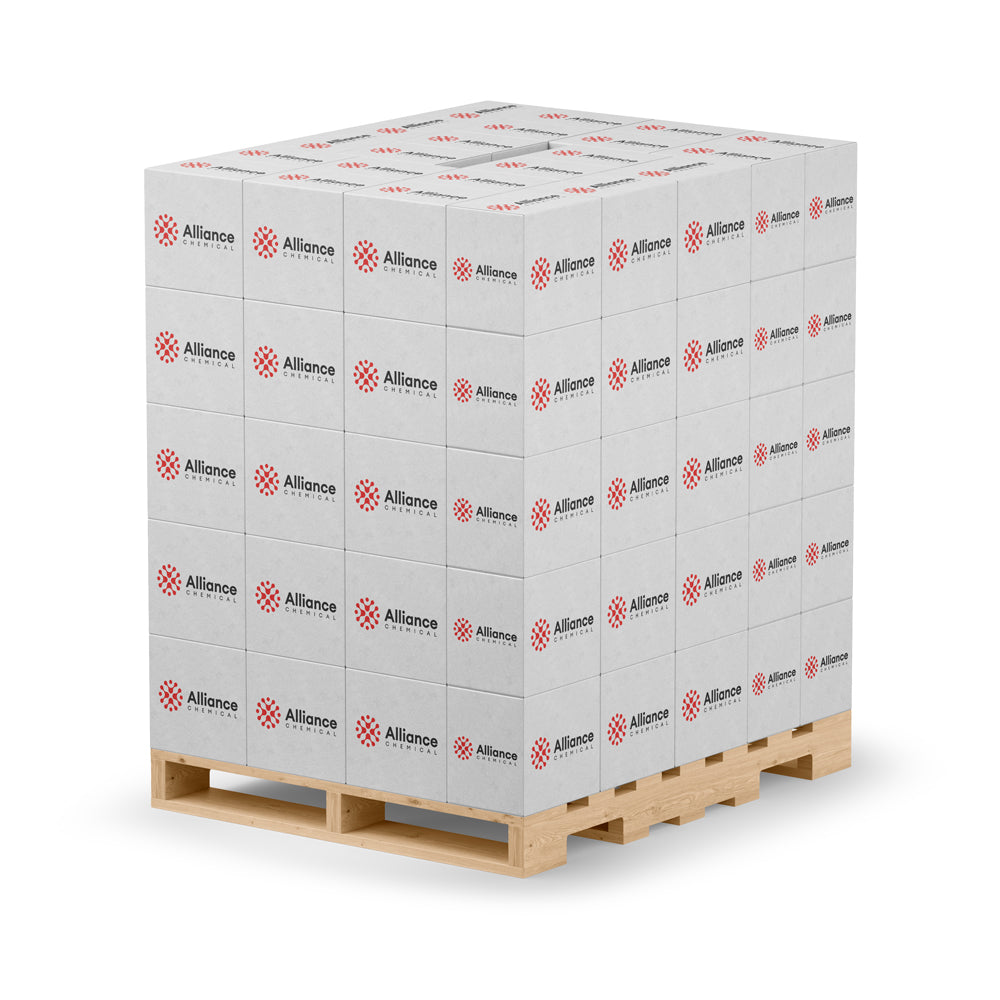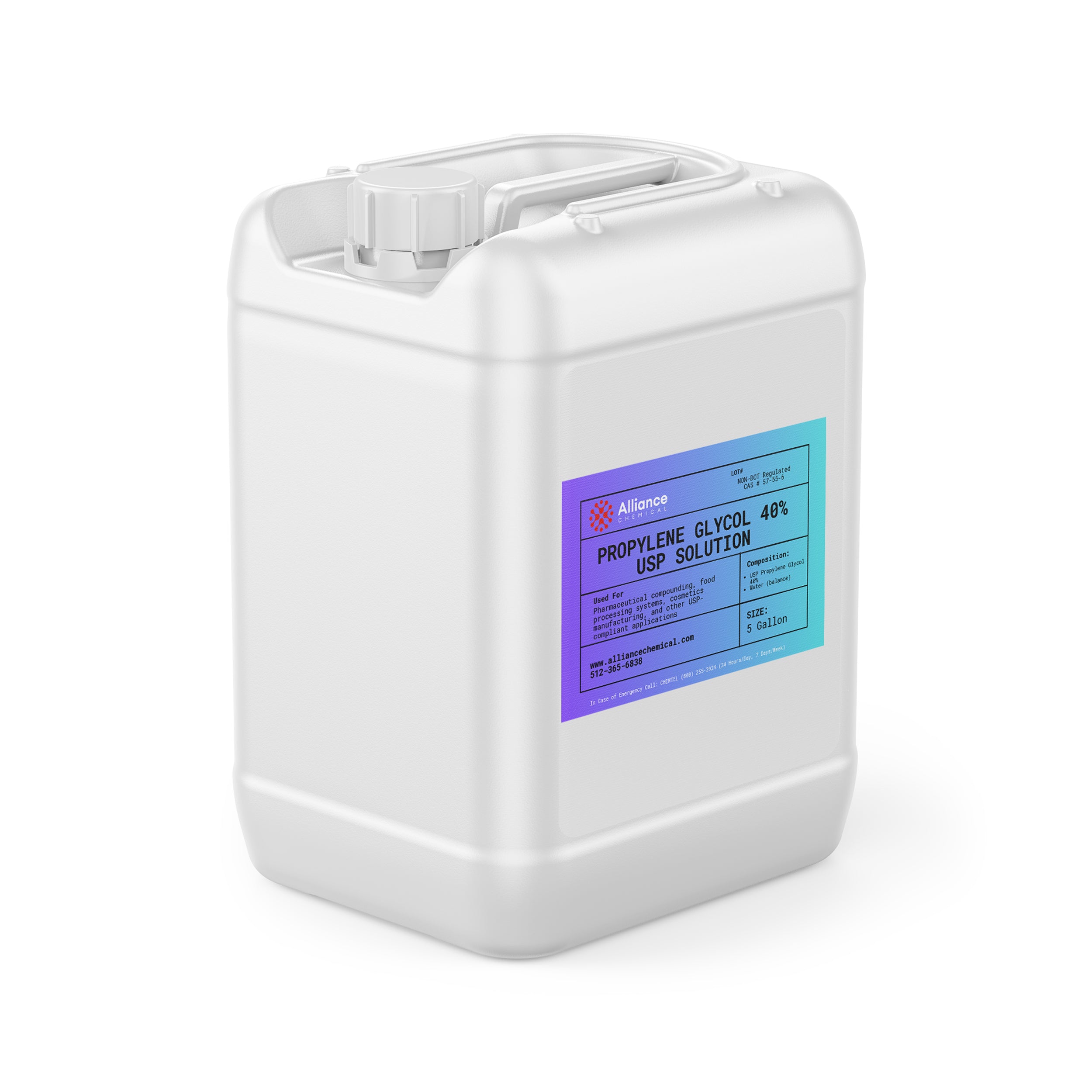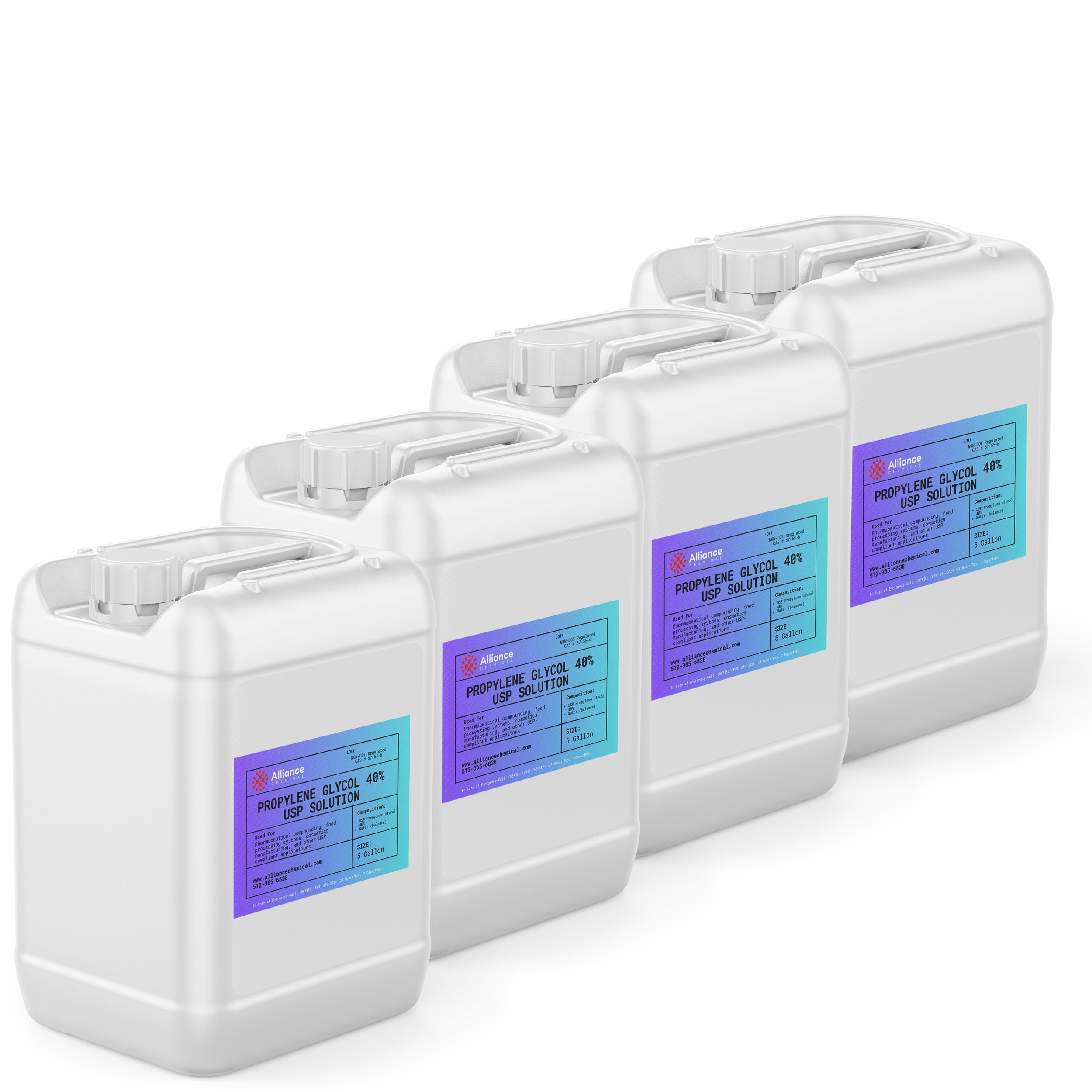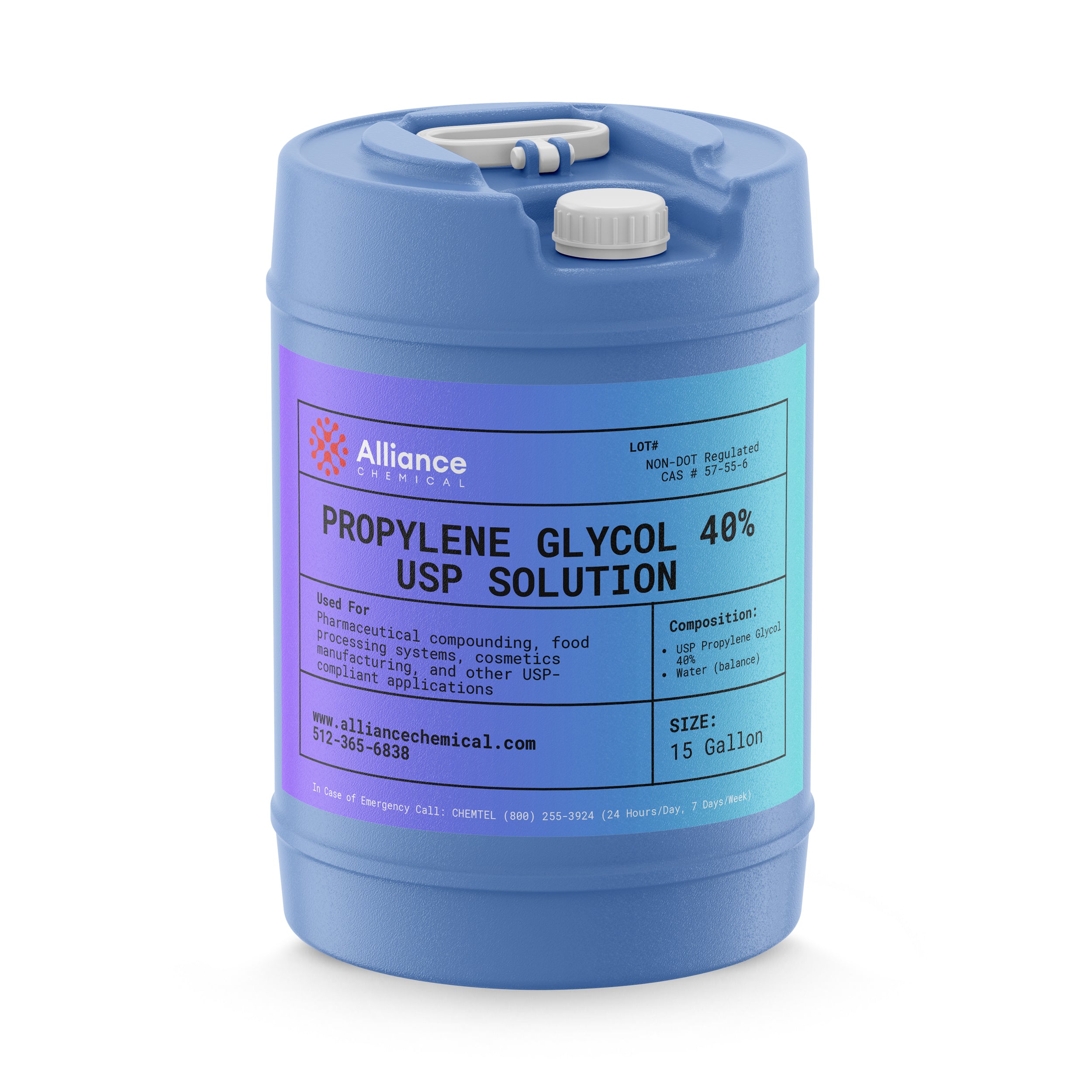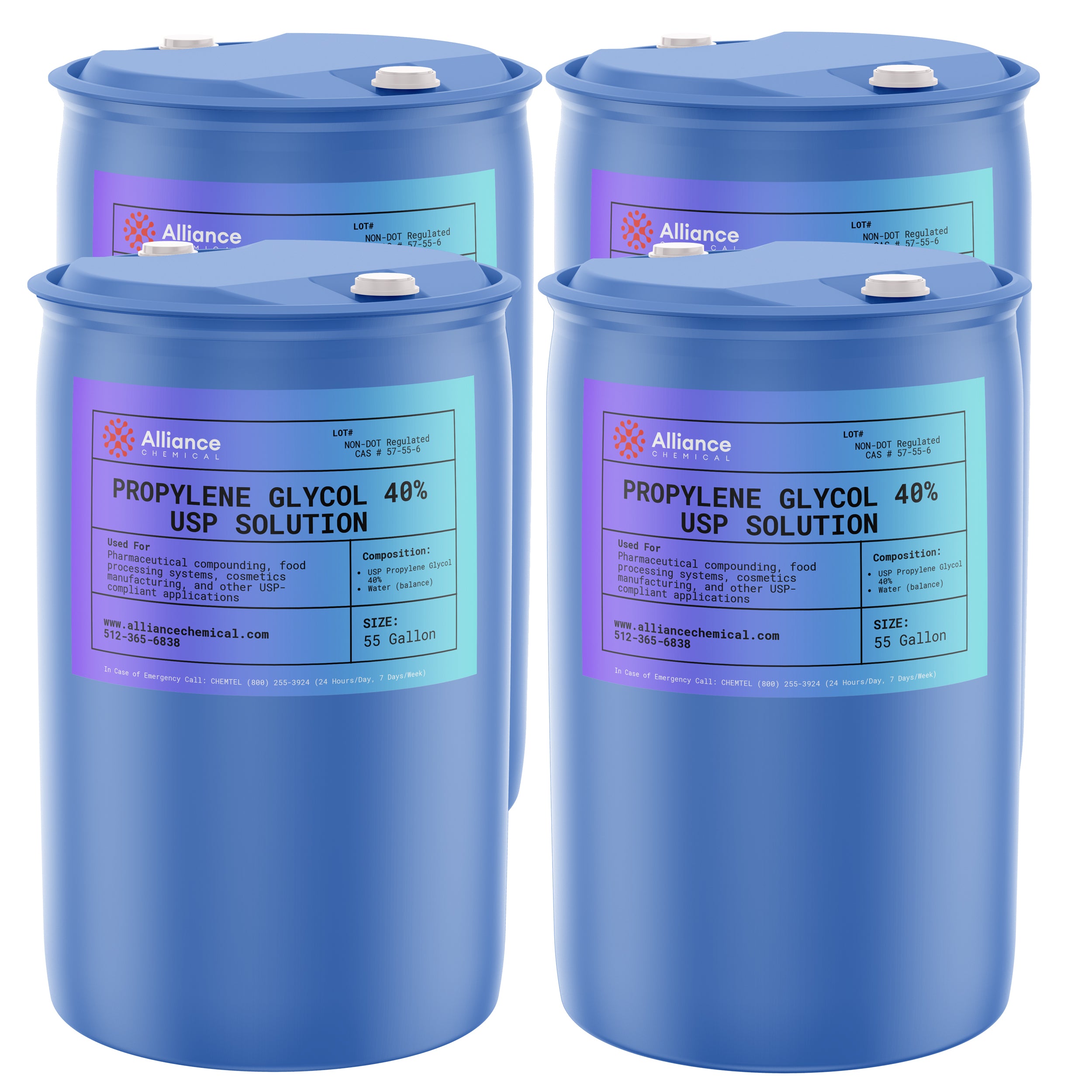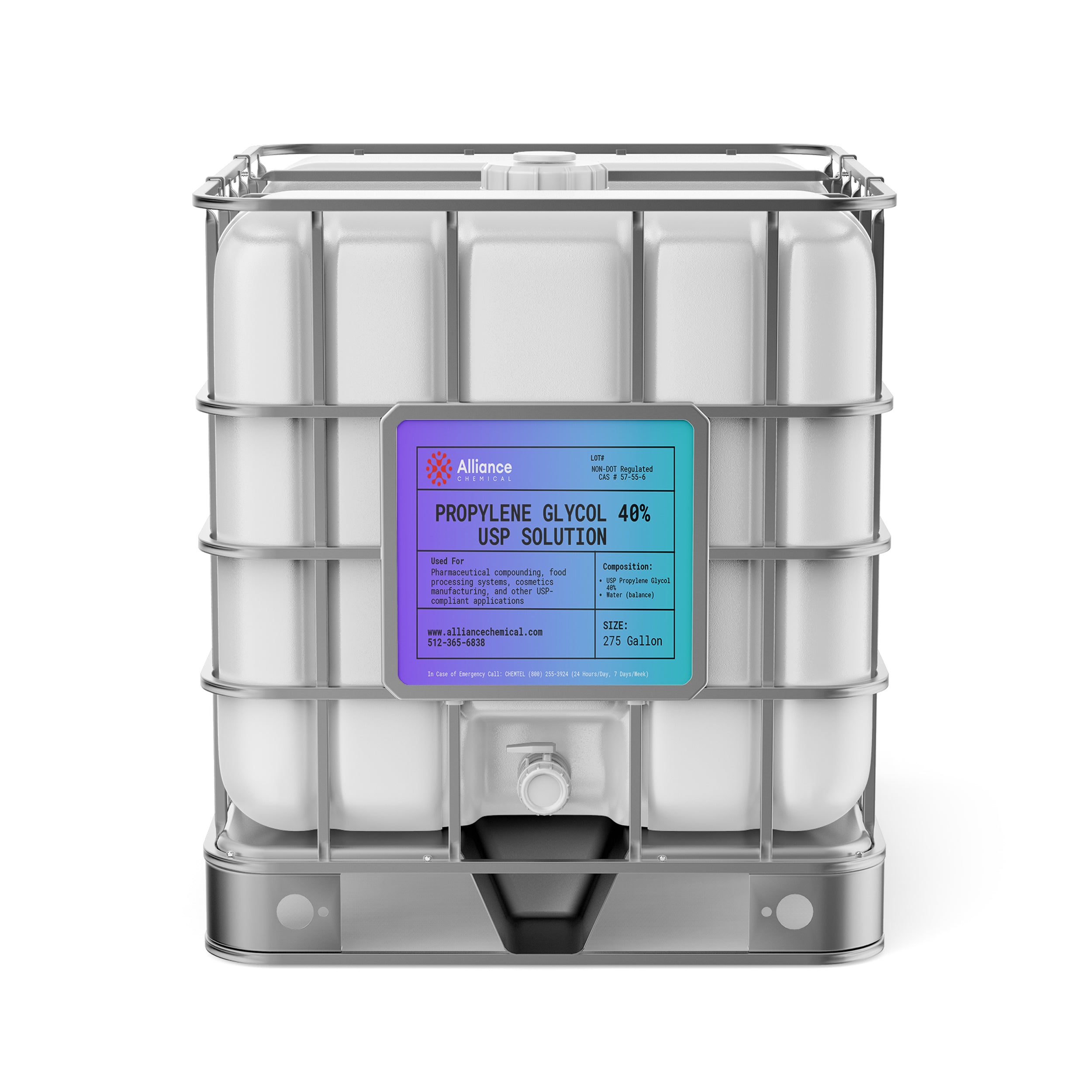Propylene Glycol 40% – USP Grade (C3H8O2)
Category : Glycols
$18.00
Unit price
Quantity
Ask a question
Product Overview
Propylene Glycol 40% – USP Grade (C₃H₈O₂) is a clear, colorless liquid solution composed of high-purity propylene glycol and deionized water. Also known in the industry as Propane-1,2-diol, PG, or MPG, this USP-grade material meets strict pharmaceutical standards, delivering reliable solvent properties and low toxicity. The ±1% assay range (39–41% w/w) is verified by titration, ensuring consistent carrier performance for pharmaceutical excipients, food processing, and industrial manufacturing.
This solution serves as an essential solvent, humectant, and carrier due to its complete miscibility with water and many organic solvents. With a typical APHA color of 5 and low residue after ignition, it is ideal for sensitive applications requiring high purity. The material is packaged under controlled conditions to strictly limit moisture uptake and is verified against ACS/USP testing protocols to ensure compliance with USP-NF Monograph standards.
Key Properties
- Appearance: Clear, colorless liquid
- Grade: USP (United States Pharmacopeia)
- CAS Number: 57-55-6
- Formula: C₃H₈O₂
- Assay (Wt %): 39–41% (Typical 40%)
- Specific Gravity (25°C): 1.036–1.041
- Boiling Point: 188.2°C (Pure component base)
- Solubility: Miscible with water and many organic solvents
- Residue After Ignition: Max 0.005%
- Chlorides/Sulfates: Strictly controlled to PPM levels
- Heavy Metals (as Pb): Max 0.2 ppm
Common Applications
- Pharmaceutical Excipients: Serves as a solvent and carrier for active ingredients, meeting USP-grade purity requirements.
- Industrial Heat Transfer: Used in antifreeze and heat transfer fluids where low toxicity and specific thermal properties are required.
- Cosmetic Formulations: Acts as a humectant and moisturizing solvent in personal care products.
- Processing Solvent: Effective medium for synthesis and purification steps requiring a polar, water-miscible solvent.
- Analytical Chemistry: Used as a mobile phase component in chromatography workflows.
- Food Processing: Functions as a humectant and stabilizer in various food-grade applications.
Safety and Handling
Store in a cool, dry place away from direct sunlight, ensuring containers (HDPE or glass) are tightly sealed to prevent contamination. While Propylene Glycol 40% is generally considered low toxicity, standard industrial hygiene practices should be observed. Wear appropriate PPE, including gloves and safety goggles, when handling bulk quantities. Ensure adequate ventilation in processing areas.
This product is not classified as a hazardous material for transport. However, always refer to the Safety Data Sheet (SDS) for detailed handling, spill, and emergency response procedures.
Benefits
USP-Grade Compliance – Rigorously tested to meet USP-NF Monograph requirements for assay and impurities.
Versatile Performance – Excellent solubility and stability for use as a solvent, carrier, or humectant.
High Purity Profile – Low heavy metal and chloride content ensures compatibility with sensitive formulations.
Related Products
| Property | Value |
|---|---|
| Molecular Weight | 76.09 g/mol |
| Formula | C3H8O2 |
| Assay | 40% |
| Grade | USP |
| Flash Point | Not applicable (aqueous solution; not classified as flammable) |
| Form | Liquid |
| Solubility | Fully miscible with water and many organic solvents |
| Appearance | Clear, colorless, slightly viscous liquid |
| Boiling Point | 188°C (pure component reference) °C |
| Specific Gravity | 1.032 |
| Industry | Datacenter , HVAC , Food Processing, Pharmaceutical , Industrial , AI Infrastructure, Medical , Solar Thermal |
BHS-3V7-816
$18.00
Unit price
Compare Products
| Price |
|---|
| SKU |
| Rating |
| Discount |
| Vendor |
| Tags |
| Weight |
| Stock |
| Short Description |

